28.05.2019
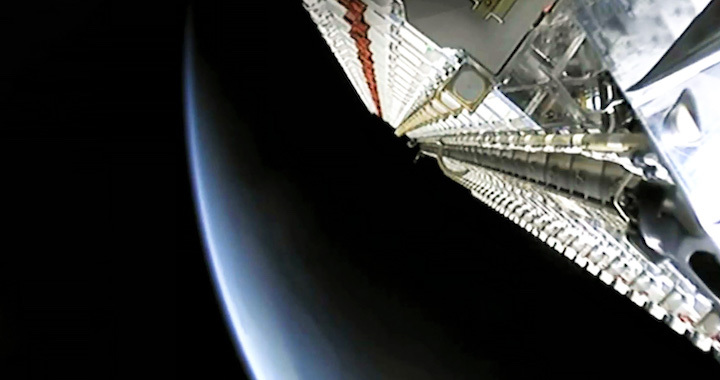
On the heels of a swelling debate among astronomers about the potential negative scientific impacts of constellations like Starlink, SpaceX CEO Elon Musk says that the company will “make sure [it] has no material effect on … astronomy.”
Additionally, Musk noted that he had already asked Starlink engineers to examine methods of reducing the albedo (i.e. reflectivity) as one potential upgrade for future satellites. Most importantly, however, the 60 satellites launched on March 23rd are just three days into their orbital debut. As the first flight of an entirely new SpaceX-built satellite bus, this is SpaceX’s first time ever attempting to launch or operate so many of its own spacecraft, and Starlink v0.9 is no less of an experiment for SpaceX than it is for unaffiliated observers.
SpaceX’s first 60 finalized Starlink satellites have only just begun the process of on-orbit checkouts and are likely no less than one or several weeks away from some form of commissioning, in which each spacecraft will begin seriously testing its payloads. At the moment, the satellites still need to climb to their final orbits (550 km vs. 450 km) with their own electric ion thrusters and have yet to begin anything resembling static operations.
Once they’ve fully circularized their orbits at 550 km, the 60 (hopefully) satellites can begin those commissioning procedures. This will likely be the first flight-test for a number of new SpaceX-built or designed technologies, ranging from wholly unproven hardware or improved variants of components from the Tintin era to the radically new form factor of the unflown Starlink bus. This includes as many as four in-house phased array antennas per satellite, described by Musk as some of the most advanced commercial antennas in the world.
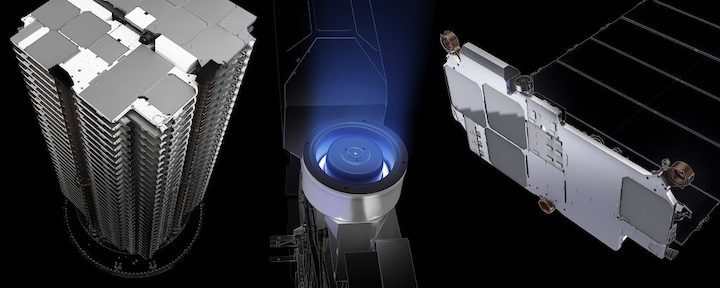
MORE THAN “INTERFERENCE” PROTECTION
However, aside from Musk’s assurance that SpaceX would do everything it can to minimize or even entirely prevent interference with scientific research and science-critical astrophotography, the CEO also expressed awareness of the many potential ways Starlink could actually benefit astronomy and other space sciences. Most notably, what SpaceX has actually arrived at with Starlink v0.9 is an extraordinarily cheap, high-performance satellite bus capable of supporting significant payloads, be it high-throughput antennas or something more exotic.
That “something” could be fairly wide-reaching, including astrophysics payloads, radio instruments, lasers, cameras, and maybe even telescopes. Additionally, thanks to their relatively efficient and low-cost ion thrusters, individual Starlink satellites could even be capable of radically changing their orbits, potentially even escaping Earth and heading to destinations like the Moon, Mars, and near-Earth asteroids/comets. Musk has repeatedly raised the possibility of building and launching SpaceX’s own Starlink-based interplanetary spacecraft, a potentially revolutionary concept thanks to their low cost.
Despite the potential scientific value, the fact remains that space-based observatories are unlikely to fully match the ease, affordability, and accessibility of ground-based telescopes for scientific observations for decades, if ever. Until then, SpaceX thankfully sounds more than willing to cooperate closely with international science communities to mitigate or fully prevent the disruption of ongoing research.
Quelle: TESLARATI
+++
SpaceX's Starlink Could Change The Night Sky Forever, And Astronomers Are Not Happy
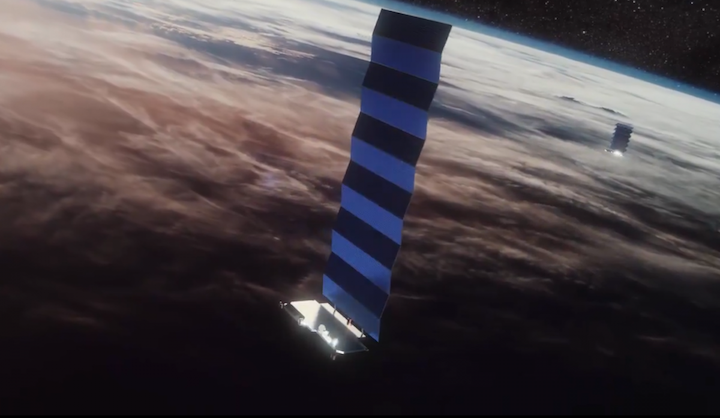
On Thursday, May 23, Elon Musk’s SpaceX successfully launched its first 60 Starlink satellites, a planned mega constellation of satellites designed to beam internet from space to the world. But since footage emerged of the train of satellites in the night sky, astronomers have been up in arms at the impact Starlink could have on our views of the cosmos.
Starlink is designed to eventually consist of 12,000 satellites, orbiting at altitudes of about 550 kilometers and 1,200 kilometers. SpaceX is one of nine companies known to be working on global space internet, and already concerns have been raised about space junk. Now astronomers too are worried about what the future may hold.
“The potential tragedy of a mega-constellation like Starlink is that for the rest of humanity it changes how the night sky looks,” says Ronald Drimmel from the Turin Astrophysical Observatory in Italy. “Starlink, and other mega constellations, would ruin the sky for everyone on the planet.”
Following the Starlink launch, several observers – including amateur astronomer Marco Langbroek – captured footage of the satellites in orbit. All 60 were deployed in a train, one behind the other, but astronomers were surprised that the satellites shone brighter than many had expected them to.
“What I had not anticipated was how bright the objects were and how spectacular a view it would be,” says Langbroek. “It really was an incredible and bizarre view to see that whole train of objects in a line moving across the sky.”
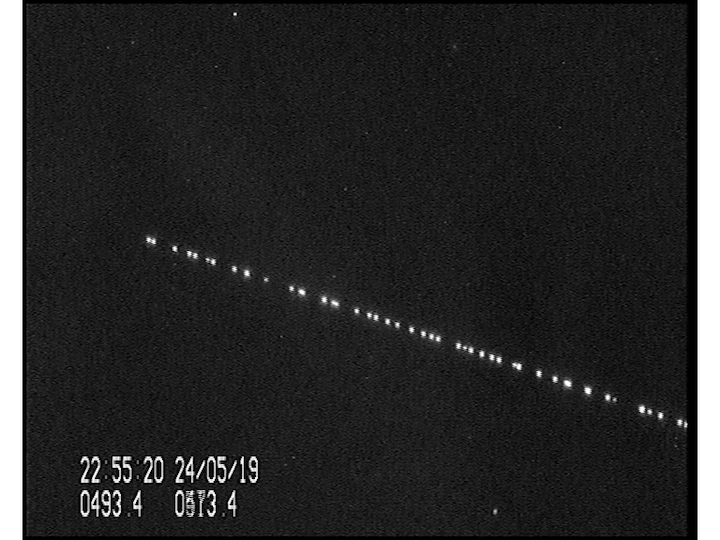
SpaceX had kept the logistics of each satellite under wraps prior to the launch, but following the launch it was revealed that each satellite had a relatively large solar panel, perfect for not only gathering but reflecting sunlight back to Earth. This means anyone looking up at the stars, from any location on Earth, would always have the final Starlink constellation in view, for better or worse.
“It turns out that these satellites are easy to see with our own eyes, much brighter than we were expecting,” says astrophysicist Darren Baskill from the University of Sussex in the U.K. “If we can see them with our eyes, that means they are extremely bright for the latest generation of large, sensitive ground-based telescopes.”
Such telescopes include the Large Synoptic Survey Telescope (LSST), currently under construction and designed to take wide sweeping views of the night sky to study a variety of bodies such as asteroids and comets.
While the true impact of Starlink isn’t known yet, it’s thought the LSST may have to deal with one Starlink satellite every few images, notes astrophysicist Bruce Macintosh from Stanford University in the U.S., resulting in a streak through the image. Such issues are not new to astronomers, but the sheer number of Starlink satellites is cause for concern.
“Part of the knee-jerk reaction across the astronomy community after the launch of the Starlink satellites was purely caused by a lack of information,” says astrophysicist Jessie Christiansen from the California Institute of Technology (Caltech) in the U.S. “A significant amount of the outcry could have been avoided if there had been an impact study done in advance.”
During the dead of night the satellites are unlikely to be visible, as they will be in darkness with no sunlight to reflect. But it’s in the hours after sunset and before sunrise that people are most worried, when the thousands of satellites will be reflecting light from orbit and, it appears, clearly visible to anyone looking up.
Another concern is not just for visual astronomy, but radio astronomy too. Each satellite will emit radio signals in order to communicate with Earth, and for astronomers that rely on radio waves to study the universe – such as the first image of a black hole revealed last month – Starlink may bring with it new complications.
“Radio astronomers are even more concerned as the satellites are transmitting in the 10.7-12.7 GHz band, which includes the spectral lines of water among other things,” says space archaeologist Alice Gorman from Flinders University in Australia. “Radio astronomers fight daily to protect critical observation bands, and this is only going to get worse.”
Musk, to his credit, has responded to some of the concerns on Twitter. After initially seeming to misunderstand how and why the International Space Station (ISS) is visible in the night sky, he noted that SpaceX was looking into how to mitigate the effects of Starlink satellites on astronomy.
“Sent a note to Starlink team last week specifically regarding albedo reduction,” he said. “We’ll get a better sense of value of this when satellites have raised orbits and arrays are tracking to sun.”
He also implied that the ultimate goal of Starlink – bringing internet to the 3.3 billion people in the world who are offline, and using that money to fund SpaceX’s missions to Mars and beyond, albeit with an unclear market on how many of those can afford space internet or want to be online in the first place – was a “greater good” than any impact on astronomy.
“Potentially helping billions of economically disadvantaged people is the greater good,” he said. “That said, we’ll make sure Starlink has no material effect on discoveries in astronomy. We care a great deal about science.”
It’s clear, however, that much work will still need to be done to allay the concerns of the astronomy community. While some may point to the benefits services like Starlink could bring, others will be quick to point out the irrevocable impact this could have on human culture.
“I’m not so worried about astronomy per se,” says Drimmel. “I’m worried that what inspired me to become an astronomer is at risk.”
While those initial images of the train of satellites were impressive, the possibility of having so many satellites constantly visible is somewhat alarming. Astronomers may well be able to mitigate the impact of Starlink and other satellites (several teams are already working on models to see how that might be done), but the night sky itself may change forever as a result.
“With Starlink, we are expecting at least 100 satellites to be visible at any one time [at any location on Earth],” says Baskill. “Soon, even those fortunate to experience a truly dark site will find it filled with a haze of metal, slowly swarming across the night sky.”
Quelle: Forbes
+++
SpaceX’s Starlink satellites spark fights between astronomy, spaceflight fans
Just a handful of hours after SpaceX successfully placed all 60 of its first Starlink v0.9 satellites in orbit, ground observers began capturing and sharing spectacular nighttime views of the spacecraft. Soon after, fans and practitioners of astronomy and spaceflight began bickering.
The topic of concern: light pollution, not from lights on the ground but from sunlight-reflecting satellites in orbit. Immediately after launch, the ‘train’ of 60 Starlink satellites were undeniably spectacular, easily visible to the eye and as bright or brighter than the brightest stars in the sky. For the most part, reactions seemed to lean more towards awe than concern, but it didn’t take long for people to begin extrapolating from 60 satellites to Starlink’s peak of ~11,900 (an increase of 200X), and some responses began to paint SpaceX’s constellation in a more negative light.

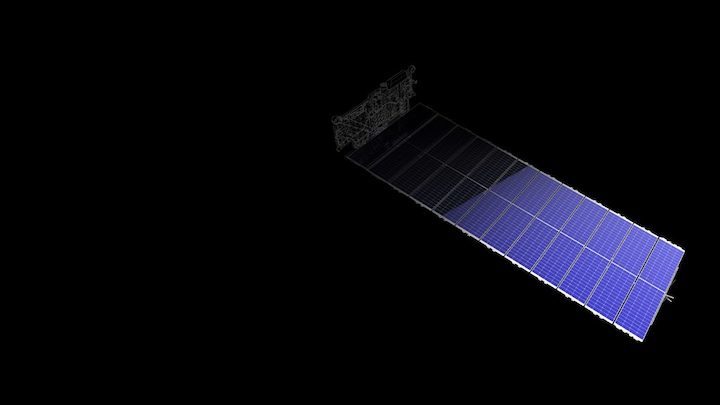
 Trevor Mahlmann (@TrevorMahlmann)
Trevor Mahlmann (@TrevorMahlmann)